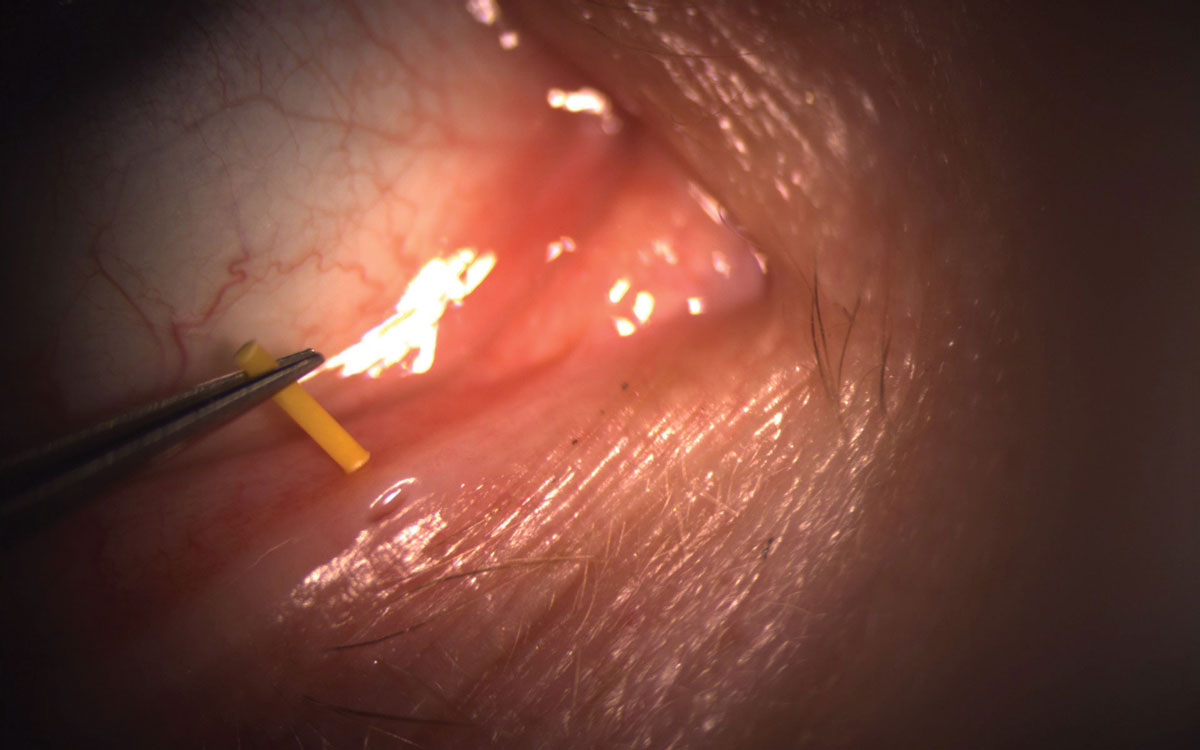 |  |
With over four million cataract procedures performed each year, optometrists must be ready to provide the necessary perioperative care. From the initial diagnosis to the post-op care, we communicate with patients and work with surgeons to ensure everyone is on the same page and moving toward the most desirable outcome.
Ocular Drug Delivery
One of the most difficult aspects of any ophthalmic procedure is choosing the drops that patients take pre- and post-op. There are numerous factors to take into consideration, including name brand vs. generic, dosage and the option of intracameral injections. Although efficacy and safety are among the most important, we must also consider the five Cs: corneal toxicity, cost, convenience, confusion and compliance. If any one becomes too cumbersome, many patients will not use their medication as prescribed. To address these concerns, several companies have presented new approaches to ocular drug delivery for surgery:
Dextenza. In November 2018, Ocular Therapeutix introduced the first therapeutic intracanalicular insert. It delivers 0.4mg of dexamethasone to treat pain and inflammation following ocular surgery. One preservative-free hydrogel insert can relieve postsurgical side effects for up to 30 days. Following treatment, Dextenza resorbs and exits the nasolacrimal system without the need for removal.
In each of three trials, a higher proportion of Dextenza patients were pain-free on post-op day eight vs. controls.1 On post-op day 14, two of the studies observed a higher proportion of Dextenza patients with a statistically significant absence of anterior chamber cells.1
Dexycu. Approved by the FDA in February 2018, this single intraocular dose of 0.005mL of dexamethasone 9% is administered in the posterior chamber to treat post-op inflammation. Although steroid injections have been used off-label in dropless cataract surgery, EyePoint Pharmaceuticals’ Dexycu is the first drug to have this on-label indication.
A trial reported the percentage of Dexycu patients with anterior chamber cell clearing on post-op day eight was 20% in the placebo group and 57% and 60% in the 342µg and 517µg Dexycu groups, respectively.2 The percentage of participants who received rescue medication of ocular steroids or NSAIDs was significantly lower in the treatment groups.2
 |
| Dextenza has a reported 30 days’ duration of efficacy. Click image to enlarge. |
Compounded medications. A few compounding pharmacies (Imprimis Rx and Ocular Science) have entered the ophthalmic market to help address issues of the five Cs. Drugs are compounded into either intracameral injections or combination drops. For example, we use gatifloxacin-bromfenac-prednisolone QID for two weeks before switching to bromfenac-prednisolone QID for three weeks. Other practices use the dropless formulation of intracameral injections of dexamethasone and moxifloxacin at the end of surgery.
These medications are not FDA-approved for this specific indication and have not gone through large randomized studies or regulated quality control measures. However, they have been used for a long time in an off-label manner to address issues with on-label medications. Speaking from decades of experience with various compounded medications, we advise that you must be prepared for varying levels of both efficacy and adverse events.
It’s exciting to have so many new medication options available for ophthalmic surgery, but be mindful to take the full clinical picture into account when selecting which is best for your patient. Only time will tell where these newer options fit in and what optimal outcomes they may be capable of delivering.
1. Dextenza. www.dextenza.com/wp-content/uploads/DEXTENZA-Full-Prescribing-Information.pdf. July 7, 2020. 2. Dexycu. dexycu.com/downloads/DEXYCU%20Prescribing%20Information_6-11-20.pdf. July 7, 2020. |

